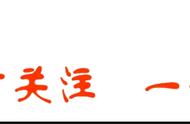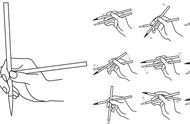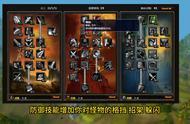Lesson 77-78
否定疑问句 否定疑问句可以表示说话者惊异的情绪、责难的口吻或赞叹; 也可表示说话者的某种建议、邀请、请求或看法等。请看下列疑问句的简略否定式:
(be:) Aren't you a student? 难道你不是学生吗?Isn't it hot here? 这里难道不热吗?
(can:) Can't you wait a moment? 你不能等一会儿吗?
(have:) haven't I asked you? 难道我没问过你吗?
(do:) Don't you want to stay with us? 你难道 不愿意与我们呆在一起吗?
(did:) Didn't you see him yesterday? 难道你 昨天没看见他吗?
回答这种问题时用简略回答。如果答语是肯定 的,就用 Yes;如果答语是否定的,就用 No。不过,这种答语的汉语译法有特殊之处。
一般否定疑问句有完全式和简略式之分,它们 的词序是不同的。
完全式: Is she not a nurse? 她不是一位护士吗?
简略式: Isn't she a nurse? 她不是一位护士吗?
Lesson 79-80
must 与 need
(1)must v. aux. [无时态和人称变化 , 后面接 不带 to 的动词不定式]
[表示义务、命令或必要] 必须 , 应当 Soldiers must obey orders. 军人必须服从命令。
We must keep our word. 我们必须遵守诺言。
You must not do it. 你不可以做那件事。
We must tell him. 我们必须告诉他。
【说明】 过去、 未来、 完成等式可用 have to 的相应形式来代替, 例如 : I must [have to] do it today. 我必须今天做。
I had to do it yesterday. 我本该昨天做。
I shall have to go there some day. 总有一天我会去那儿的。
[表示推断或指具有较大的可能性 ]很可能 ; 谅必 [否定用 cannot be, could not have p.p]
You must be very tired. 你一定很累了。
He must have earned a large sum of money. 他一定是挣了一笔巨款。
[表示主张 ] 一定要 , 务必
If it is really lost, it must be found. 如果真丢了,一定要找回来。
[表示不可避免性或肯定性 ] 必然要 , 必定会 Man must die. 人必有一死。 [表示与说话人愿望相反及不耐烦]偏要
Why must it rain on Sunday? 偏要在星期天下 雨 , 讨厌 !
Just as I was sitting down to supper, the telephone mustring. 正当我坐下来用晚餐时 , 偏偏电话铃响了。
[表示请求 ]
Must I go now? 我现在可以走了吗 ? n. [口 ] 必须做的事 , 必需的东西
The new film is an absolute must. 这部新片不可 不看。
adj. [口] 绝对需要的 , 不可缺的
must legislation 不可缺少的立法
This is a must book for your reading. 这是一本 你必须要读的书。
(2)need表示 “需要 ”、“必须 ”。作助动词时多 用于疑问句和否定句,如:
Need I make an appointment? 我需要约一下时间吗?
You need not hurry. 你不必太匆忙。
need 也可作实义动词,这时就要有人称、数及 时态上的变化,疑问句中也需用助动词 do。如:
We need a lot of things this week. 我们这周需 要许多东西。
He needs some money. 他需要一些钱。
Do you need any sugar? 你需要一些糖吗?
What do they need this week? 他们这周需要什么东西?
Lesson 81-82
完全动词 have(3)
have 可以代替常用动词 ,表示eat, enjoy, experience, drink, take 等意义。这时的 have 是行为动词,所以与动作有关,而不像 have 表示“具有”时(请参见 Lessons 59~60 语法部分)那样表示状态(如 I have〈 got〉a car)。因此,它可以用于各种时态。
如:
Have a cigarette! 抽根烟吧!
I'm having a drink. 我在喝酒。
We had lunch together today. 我们今天一起吃了午饭。
当 have 不表示 “有”而表示其他意思时, 其用法和英语中的其他动词相同,意即:在疑问和否定结 构中, have的一般现在时和一般过去时形式必须用do,does和did
Lesson 83-84
现在完成时
(1)在英语中,现在完成时主要用于以下两种 情况:或者表示在过去不确定的时间里发生的并与 现在有着某种联系的动作;或者表示开始于过去并 持续到现在的动作。本课中萨姆所面临的是第1种情况, 正是因为他吃了饭, 喝过了咖啡, 也休过假, 因此他谢绝了汤姆的邀请,并表示今年已无可能再 次休假。
(2)现在完成时在汉语中常用 “了 ”、“过 ”或 “已 经 ”来表示。
(3)现在完成时由 have/has 过去分词构成, 单数第 3 人称用 has,其他人称皆用 have。规则动 词的过去分词与过去式相同,而不规则动词的过去分词则无统一的规律可言,需特别加以记忆。
(4)一般现在完成时通常与表示不确定的时间 副词或短语连用如 just, already, before, never, ever, twice, three times 等。
Lesson 85-86
have been 与 have gone
have been to a place表示曾经去过某地, 但现在 不在那个地方了; have gone to a place表示已经去某 地了,现在在那个地方或正在去的路上。如:
George has been to Paris. 乔治去过巴黎。(他 现在不在巴黎。)
George has gone to Paris. 乔治去了巴黎。(他 在巴黎或去巴黎的路上。)
Have you ever been to America ?你去过美国 吗?(对方不在美国境内。)
Has he gone to Washington D. C.? 他去华盛顿 了吗? (被提到的人有可能现在美国境内或在赴美 途中。)
Lesson 87-88
现在完成时的疑问式及否定式
现在完成时的构成是 have/ has 过去分词, 因 此其疑问式是将 have/ has 提到主语之前,否定式 则在 have/ has 后加上 not 即可。
Lesson 89-90
for 与 since
现在完成时还可以描述发生在过去且一直延续
到现在的动作,这种动作甚至有可能延续下去。在 这种情况下,它一般与 for 一段时间、 since 某个时间点连用。
请注意: for 一段时间表示某个动作持续多长 时间; since 某个时间点表示某个动作是何时开始的。
Lesson 91-92
一般将来时
(1)一般将来时表示将来某一时刻的动作状态以及打算。该时态一般与表示将来意义的时间状语连用,
如 tomorrow(明天),
this month(本月),
the day after tomorrow(后天),
next week (下周),
in two days' time (两天之后),
from now on (从 现在起),
in the future (将来)等。
(2)一般将来时的形式为 will / shall 动词原形。
will 可用于所有人称,但 shall 仅表示单纯将来 时用于第一人称 I 和 we,作为 will 的一种替代形式。
否定缩写: shan't =shall not, won't =will not:
I shan't leave tonight. I'll leave tomorrow. 今天 夜里我不走。我将于明天离开。
They won't go to London this weekend. 这个周末他们不去伦敦。
此外, will 除了表示纯粹的将来时间外,还表示说话人的意图和意愿,而shall除了表示将来时间外同时还表示说话人的责任或决心。
(3)除了 will/shall外,还可以用其他方法表示将来。在口语中,be going to 比will/shall更为普通,用来表示说话人的意图或打算。如:
She is going to travel by air. 她打算乘飞机旅 行。
也可用来表示有迹象某事即将发生。如:
It's going to rain. 将要下雨了。
(4)可与将来时连用的时间短语有:
今天:
this morning/afternoon/evening 今天上午/下午/晚上 tonight 今夜
明天:
tomorrow morning/ afternoon/evening 明天上午/下午/晚上
后天:
the day after tomorrow 后天 the night after next 后天夜里
其他:
in the morning 在上午 in the afternoon 在下午 in the evening 在晚上
Lesson 93-94
可与一般将来时连用的时间短语
(1)this week(这周),
next week(下周),
the week after next(下下周),
this month(这个月),
next month(下个月),
the month after next (下下个月),
this year(今年),
next year(明年),
the year after next(后年).
注:一般过去时中通常会用 last 一词,而不 是 next.
(2)in a day's time(一天以后),
in a year's time(一年以后),
in two weeks time (两周后),
in three months' time (3 个月后)等等。
Lesson 95-96
had better 与 must had better 表示 “最好还是 ”、 “最好 ”,表达某种忠告或建议。
句型: had better do sth.
must 则表示 “必须 ”、 “一定 ”,语气比 had better强烈。
had better 表示现在时或将来时, 而不是过去时。
其否定形式为 had better not do sth.
We had better wait and watch for a better chance.
我们最好等一等,寻找更好的机会。
When it rains, you had better not go out.
天下雨的时候,你最好别出去。
You had better be overhauled by a doctor.
你最好给医生详细检查一下。
You had better do a little hard thinking.
你最好仔细想一下。
If you can't finish the book by then, you must come and renew it.
这本书如果你到时候还看不完 , 就必须来续借。
Lesson 97-98
所有格形容词和所有格代词(2)(请参见Lessons 11~ 12 语法部分。)所有格形容词和所有格代词都是用来表示所有
关系的。所有格形容词是限定词,放在名词前与名 词构成名词短语,在句中作定语用。所有格代词后 面不能再加名词,在句中作主语、宾语、表语用。
Lesson 99-100
1.宾语从句(1)
宾语从句在句中作宾语,一般用 that 引导,但在口语中经常省略掉that. 可用在say, think, believe, hope, know, understand, suppose 等动词之后:
She says that she is cold. 她说她冷。
He thinks that he needs an X-ray. 他认为他需要 拍个 X 片。
I know that I can repair this car. 我知道我能修 理这部车。
50 They believe that they will have more money. 他们认为他们会有更多的钱。
可用在某些描写感情的形容词之后,如 afraid,
sure, sorry,glad 等:
I am sure that you need an X-ray.
我觉得你需要拍个 X 片。
I am sorry that you are ill.
听到你生病了我很难过。
2.间接引述时的时态 假如间接引语中的引述动词是现在时,那么其
后的时态通常与原来口头陈述句的时态相同。转述 刚刚说完的话时通常皆如此。
Lesson 101-102
直接引语和间接引语 直接引语就是直接引用说话人原来所说的话;
间接引语就是原话的转述。直接引语放在引号里, 间接引语是把说话人的原话变成宾语从句。
间接引语中,宾语从句中的动词与主句中的主 要动词在时态上必须保持一致。一般来说,主要动 词用现在时,间接引语中可用现在时(包括一般现
51 在时、现在进行时、现在完成时)和将来时。如:
She says she's got a headache. 她说她头痛。
He says he's staying at a Youth Hostel. 你说他 正住在一家青年招待所。
He says he has sold his house. 他说他已卖掉了房子。
把直接陈述改为间接引语时,谓语动词形式的 变化体现在人称上。如:
He says: ‘ I hope you are all well. ’ 他说 :"我希望你们都身体健康。 "
He says he hopes we/they are all well.
他说他希望我们/他们都身体健康。
Lesson 103-104
too 与 enough
(1)enough 的用法
A 在形容词之后使用:
He failed the exam because it wasn't easy enough.
他考虑不及格, 因为题不够轻易。 (不说 enough easy)
B 在名词之前使用:
He didn' t buy the car because he didn't have enough money.
他没买那部车,因为他没有足够的钱。
C 可以用在 enough for sb./sth.和 enough to do sth.结构之中:
She hasn't got enough money for a holiday.
她没有足够的钱去度假。
This dress isn't big enough for her.
这件衣服对她来说不够大。
She's not old enough to live alone.
她未到独自生活的年纪。
(2)too 的用法
A too 表示 “过于 ”:
52 I can't go out. It's too hot.
我无法外出,太热了。
She couldn't answer the questions because they were too difficult for her.
她无法回答问题,因为对她来说太难了。
可以用在 too for sb. /sth.结构之中: This skirt is too big for me. 这条裙子对她来说太大了。
It's too easy for me.
这对我来说太轻易了。
可以用在 too to do sth.结构之中: The exam was too difficult for him to pass. 考试太难了,以至于他无法通过。
The box is too heavy for you to carry.
这个盒子太沉了,你没法扛起。
She i too young to live alone.
她年纪太小了,无法独自生活。
It's too far to walk home from here. 从这儿步行回家太远了。 请比较:
The wall is too high for them to climb over.
这堵墙太高了,他们无法攀越过去。
The wall is low enough for them to climb over.
这堵墙矮到如此之程度,以至于他们可以攀越过去。
Lesson 105-106
动词不定式: 在英语中,当一个动词被另一个动词紧跟时,它们之间必须加不定式符号(to)。不定式符号后 面的动词只能是原形,而不能是过去式或分词形式。
(1)不定式作动词的宾语(动词 to):
He wants to buy a car. 他想买辆车。
He hopes to pass the French exam. 他希望自己 能通过法语考试。
I want to leave. 我想离开。
(2)有许多动词可以带名词/代词宾语 (通常 是人称代词宾格),后面再跟不定式(动词 名词/宾格代词 to):
I want you to carry it. 我想让你扛着它。
He wants them to listen to it. 他想让他们听那个。
Tell him to move it. 让他搬它。
(3)不定式的否定形式是在 to 之前加 not: He decided not to buy the house. 他决定不买这幢房子。
He told me not to close the window. 他让我不要把窗户关了。
Tell him not to move it. 告诉他不要搬动它。
Lesson 107-108
形容词的比较级和最高级
(1)构成
A 大多数单音节形容词的比较级和最高级的构 成是在其原级后面加上 -er 和 -est:
small----smaller----smallest
new----newer----ne west
B 许多单音节形容词只有一个元音字母,其末 尾为一辅音字母。在比较级和最高级形式中,这个 辅音字母要双写:
big----bigger----biggest
thin----thinner----thinnest
C 许多单音节形容词以 -e 结尾, 如 nice。这些形容词只需在原级形式后加 -r 和 -st:
large----larger----largest
nice----nicer----nicest
D 有些形容词以 -y 结尾, 而在 -y 前是一个辅音
字母。这些形容词一般有两个音节。变为比较级和
最高级时, -y 要变成 -i,末尾再加 -er 和 -est:
easy----easier----easiest
heavy----heavier----heaviest
E 但有少数形容词的比较级和最高级是不规则 的,必须熟记,如:
good----better----best
bad----worse----worst
F 大多数较长的形容词(即有两个以上音节的
词)可与 more 连用构成其比较级形式,与 most 连
用构成其最高级形式。
(2)用法
比较级只用于两者之间,通常与 than 连用。形 容词比较级之所指假如很清楚,它也可独立存在:
This coat is longer. 这件外衣较长。 最高级用于 3 者或 3 者以上。形容词的最高级
在使用时必须加定冠词,并常伴有一个表示范围的介词短语或从句:
That girl is the tallest student in our class. 那位 姑娘是班上个子最高的学生。
Lesson 109-110
1.不规则形容词的比较级和最高级 不规则形容词的比较级和最高级例举如下:
good----better----best
bad----worse----worst
many/much----more----most
little----less----least
far----farther----farthest ( 表距离)
far----further----furthest (表程度)
2.名词的数与修饰词
可数名词的多与少,用 many 与 few 来表达;不可数名词的多与少,则用much与little 来表达
Lesson 111-112
形容词的平级比较级:as as
形容词的比较形式有 3 种:较高比较级 (more expensive, the most expensive) ;
较低比较级 (less expensive, the least expensive) ;
平级比较级 (as expensive as)。
请看下面句中 as as的用法:
The green apple is as sweet as the red one.
这个绿苹果同那个红苹果一样甜。
The policeman is as tall as the policewoman.
这个男警察与那个女警察个子一样高。
The white knife is as sharp as the black one.
这把白色的小刀与那把黑色的小刀一样锋利。
I don't know as many people as you do.
我熟悉的人没有你熟悉的多。
Robert is not as old as he looks.
罗伯特没有他看上去那么高。
The blue car is not as clean as the red car.
蓝车没有红车干净。
Lesson 113-114
so 与 neither 引导的简短回答
以 so 或 neither 开头的简短回答,必须用倒装 形式,即: So/ Neither 助动词 主语。假如前一句是肯定的, 后一句就用 so 开头;如前一句是否定 的,后一句则用 neither/nor 开头。前后两句的时 态要一致。
Lesson 115-116
不定代词
(1)every(每一), no(无), any(若干)及 some(一些)可与 one,thing 构成复合代词,与 where 构成复合副词。不定代词可作主语、宾语和 表语。
A 作主语: 这些代词作主语时都作单数看待,因此使用单数谓语动词。
Everyone is asleep. 大家都睡了。
Everything is untidy. 一切都乱糟糟的。
Nobody has told me about it. 没有人告诉过我 有关这件事的情况。
B 作宾语:
I've got nothing to wear. 我没有穿的衣服了。
I've heard nothing. 我没听到什么动静。
I saw no one. 我谁也没有看到。
C 作主语或表语:
There's nothing on the shelf. 架子上什么也没有。
There's somebodyin the garden. 花园里有个人。
That's nothing. 那没什么。
(2)与 some 与 any 的用法一样, somebody/someone/ something/ somewhere 一般用于 肯定句; anybody/anyone/anything/ anywhere 用于
疑问句与否定句; nothing/nobody/no one/ nowhere
相当于 not anything/anybody/anyone/anywhere: Someone is asking to see you. 有人要求见你。
There's something under that chair!
那个椅子下有个什么东西!
I don't know anyone here.
这儿我谁也不熟悉。
Is there anything on this shelf?
这个架子上有什么东西吗?
I went nowhere.(=I didn't go anywhere.)
我哪儿也没去。
I saw no one.(=I didn't see anyone.)
我谁也没看到。
Lesson 117-118
过去进行时
构成: be 的过去式 现在分词。 过去进行时表示过去某时正在进行的情况或动作。过去进行时和一般过去时经常在同一个句子里使用。过去进行时表示过去正在进行的情况或动 作,一般过去时则表示比较短暂的动作或事件。过 去进行时的时间状语从句一般由 when,while及(just)as 等来引导,说明主句中动作发生时的背景。此外,可用 while 或 at the time 等强调同时进 行的两种或几种动作。请看例句:
When I was doing the housework, my husband telephoned me from the office.
当我正在干家务时,我丈夫从办公室打电话给我。
While I was listening to the stereo, my mother came into the room.
我正在听立体声节目时,我母亲进房间了。
Just as she was cleaning her shoes, George knocked at the door.
她正在擦鞋时,乔治敲门了。
While I was cooking the dinner ,he was working in the garden.
我做饭时,他正在花园里劳作。
Lesson 119-120
过去完成时
构成: had 过去分词。
过去完成时主要用于表示两个事件中一个发生 在前,或者说是表示较早的过去。常与现在完成时 连用的副词,如 already(已经), ever(曾经),
for 表示时间段的词, just(刚刚)和 never(从未)也常与过去完成时连用,以强调事件发生的先后次 序。有时我们不一定非得用过去完成时表示先发生 的事件,因为意思十分清楚,如:
After I finished ,I went home. 我做完后就回家了。 请看例句:
She went on holiday after she had taken the exam.
她考试后度假去了。
I ran to the platform quickly, but the train had already left.
我赶紧跑到站台上,但是火车已经开走了。
We had had dinner before they arrived.
他们到达之前我们就已吃饭了。
The patient had died when the doctor arrived.
大夫到达时病人已经死了。
Lesson 121-122
定语从句定语从句像形容词一样起修饰作用,但位于所修饰的名词之后。定语从句由关系代词引导,紧跟在它所修饰的成分后面。
关系代词 who, whom 与that 修饰人, which 与 that 修饰东西。关系代词指 代从句的主语或宾语,同时又充当连接词,把从句 和主句连接起来。请看例句:
(1)关系代词作从句的主语 (who/which/that): The dog which/that is carrying the basket is mine. 叼着篮子的那只豿是我的。
He's the porter who/that carried my suitcase.
他就是那个扛着我的衣箱的搬运工。
(2)关系代词作从句的宾语(whom/that/which):
They're the windows which/that the children broke yesterday.
这些就是孩子们昨天打坏的窗户。
She's the lady whom I served yesterday. 她就是我昨天服务过的那位女士。
Lesson 123-124
定语从句中的省略 .
当关系代词代表主语并且从句中的谓语动词是(现在)进行时态时,关系代词及助动词 be均可省略。假如关系代词在从句中代表宾语,则往往可 以省略。此外,定语从句可用介词结尾。
请分别看以下的例句:
The woman standing behind the counter served me.
站在柜台后边的那位妇女为我服务/招待了 我。
This is the book I bought yesterday.
这就是我昨天买的那本书。
The man I served was wearing a hat.
我招待过的那个人当时戴着一顶帽子。
That's the ship we travelled on.
那就是我们旅行时乘的船。
That's the man I told you about. 那就是我告诉过你有关情况的那个人。
Lesson 125-126
must, have to 和 needn't这 3 个词都表示必要性。在前面已对 must 和have to 介绍过。
must 是情态助动词,而 have to 是普通动词,二 者在肯定句中一般可以互换,表示不可逃避的义务 或责任。must更带有说话人的主观色彩,而 have to则更强调客观要求和外界影响。
must 一般只能表达现在的必要性,而 have to 则 可以表达过去或将来的必要性。
I shall have to leave London tomorrow. 我明早得 离开伦敦。
I had to stop smoking because it was forbidden in my company.
因为我所在的公司内禁止抽烟, 所以我不得不停止了吸烟。
假如我们用 must 来提问,则只能用 needn't 来 表达否定的回答。 needn't 还可以理解为 have to 的 否定回答。 needn't (don't need to) 和 don't have to 都 表示不必要;而 mustn't 却表示绝对禁止,在说话 人看来根本没有选择余地。请看例句:
You mustn't turn left. 你不能左转弯。(表示绝 对禁止)
Lesson 127-128
表示猜测和推断的情态助动词 must 和 can't(1)
表示最有力的推论的最常用的形式是 must 和 can't。这时, 它们一般与系动词 be 连用。肯定的推 断用 must be 来表示,否定的推断用 can't be 来表 示,而不用 mustn't。请看例句:
He can't be a doctor. He must be a dentist.
他不会是个医生。他一定是位牙医。
She can't be Danish. She must be Norwegian.
她不会是丹麦人。她一定是挪威人。
He can't be shaving. He must be having a bath.
他不可能在剃胡子。他一定是在洗澡。
It can't be cheap. It must be expensive.
它不会便宜。一定价格昂贵。
He can't be ill. He must be tired. 他不可能生病了。他肯定是累了。
Lesson 129-130
情态助动词 may 表示可能性
may 或 might 都表示 “可能 ”、“也许 ”。通常既可 以用 may,也可以用 might ,不过 might 所表示的可 能性要比 may小,且当情况是虚拟的时只能用 might 而不能用 may。
(1)may 表示现在或将来的可能性: may 动 词原形:
The bread may be fresh. 面包可能是新鲜的。
He may be reading. 他可能正在看书。
I may go abroad. 我可能出国。
They may offer me a job. 他们也许会给我提供一份工作。
(2)may 也可表示过去的可能性,过去式为:
may have(done):
He was late. He may have been busy.
他迟到了。他可能一直很忙。
I went out last night, and she may have been reading.
我昨天晚上出去了,她可能一直在看书。
It may have been right. 也可能是对的。
They may have been in the garden. 他们可能那 时一直在花园里。
Lesson 131-132
需改变时态的间接陈述句 间接引语里常要改变时态,这是因为原来讲的话与转述这些话之间有一段间隔。选择哪种恰当的 形式取决于转述者的着眼点。在间接引语里通常并 不确切地重复讲话者说过的话。转述通常发生在过 去,所以引述动词通常是过去时。因此,转述时从 句的时态通常要 “往回移 ”(back shift)。一条普遍的规则是:现在时变为过去时,过去时变为过去完成时。为过去时的情态助动词和过去完成时在转述 时不变,因为不可能再往回移了。
使用间接引语主要是为了简洁、紧凑地把说话 内容转述给第3者。请看下面直接引语变成间接引 语时在时态等方面必须作出的相应变化:
(1)一般现在时改为一般过去时:‘I'm thirsty,’ she said.
She said (that) she was thirsty. 她说她渴了。
(2)现在进行时改为过去进行时:
I'm having a rest, ’ she told them. She told them (that) she was having a rest. 她告诉他们说她当时正在休息。
(3)现在完成时改成过去完成时:
I've just made a new film, ’ she told me. She told me(that) she had just made a new film.
她告诉我说她刚完成一部新影片。
(4)一般将来时改成过去将来时 (一般用 would 动词原形):
I'll have to ask my husband, ’ she said. She said (that) she would have to ask her husband. 她说她将得去问问她丈夫。
(5)情态动词由现在时改成过去时或条件时 态:
I can see you tomorrow, ’ she said. She said (that) she could see me the next day. 她说她下一天可以见我。
I'll help you, ’ she said. She said (that) she would help me. 她说她将帮助我。
I may return at six o'clock, ’ she told me. She told me (that) she might return at six o'clock.
她告诉我说她可能 6 点钟回来。
(6)为过去时或条件时态的情态助动词不变: I could see you tomorrow,she said. She said (that) she could see me the next day.
她说她第 2 天会见我。
I would complain if I were you, ’ she told me.She told me (that) she would complain if she were me.她告诉我说,假如她是我的话她就会抱怨的。
Lesson 133-134
1. let 的用法
let 与一般动词不同, 它用于动词 宾语 动词原 形结构,即 let 后面可接名词或代词,再接不带 to 的动词不定式。 其意思为 “答应 ”、“让 ”。请看例句:
She lets her son play in the garden.
她让她的儿子在花园里玩。
Her parents wouldn't let her go out with that boy. 她的父母不答应她与那个男孩子一起出去。 Just let me try! 就让我试试吧!
They didn't let the guests smoke in the lobby. 他们不答应客人们在大厅吸烟。 2.间接引语中情态助动词由现在时如何变为过去时 (参见 Lessons 133~ 134 语法部分。)
I can understand English, ’ she told me. She told me she could understand English. 她告诉我说她懂英语。
I can't afford a new car, ’ she said to me.
She told me she couldn't afford a new car.
她告诉我说她买不起新车。
‘ It will rain tomorrow, ’ she told we. She told me it would rain tomorrow.
她告诉我说明天下雨。
George won't travel by air, ’ he said. He said George wouldn't travel by air.
他说乔治将不乘飞机旅行。
I may go to the cinema this evening, ’ he said. He said he might go to the cinema this evening.
他说他可能今晚去看电影。
72 ‘ I may not retire, ’ he said. He said he might not retire.
他说他可能不退休。
Lesson 135-136
第 1 类条件句 假如我们认为将来的事件是可能发生的,就可用第 1 类条件句去描述将会发生什么事或不会发生什么事。
其基本结构是: If 一般现在时 将来时(或情 态助动词),如: If it rains tomorrow, we won't go to the seaside.
假如明天下雨,我们就不去海边。
if 从句中的现在时表示需具备的条件,主句中 的 shall/will 将来时表示可能的结果。 具备的条件是 真实的,可能真的下雨。
假如是这样,它就会有真实的结果。这就是为 什么这样的陈述句常被称为 “开放 ”条件句或 “真实 ” 条件句的原因。事实上,在第 1 类条件句中,一切 现在时态都能用在 if 之后,而不仅仅是一般现在时。 请看例句:
If he falls ,he'll hurt himself.
假如他摔倒了,他会伤着自己的。
If you don't hurry ,we'll miss the train.
你要是不赶紧点儿,我们就会误了火车。
If you feel better, you can get up.
你要是感觉好些了的话,你就能起床了。
If I am better tomorrow, I will get up.
假如我明天感觉好些了,我就起床下地。
If I have a headache, I will take an aspirin.
我要是头疼的话就会服用一片阿司匹林。
If I can afford it, I will buy it.
要是我买得起的话我就会买它。
Lesson 137-138
宾语从句(2)
在以前已介绍过宾语从句一般由 that, which 和 whom 引导,它们有时在口语中可以省略。除此之 外,宾语从句还可以由 when, where, what, why, how 以及 if 和 whether 这些疑问词来引导, 而它们在句 中往往不能加以省略。无论是 that, if 还是 wh- 疑问 词引导的宾语从句通常都应以陈述句的形式出现。
请看例句:
She wants to know when you'll have a bath.
她想知道你何时洗澡。
I don't know where she lives.
我不知道她住在哪儿。
He wants to know what you are cooking.
他想知道你在做什么饭。
75 She wants to know why Mary is late.
她想知道玛丽为何迟到。
He wants to know if you are tired.
他想知道你是否累了。
Lesson 139-140
被动语态(1)英语动词有主动语态和被动语态之分。 在主动句中,动词的主语是执行动作的人或物。 在被动句中,主语是动作的承受者。 在英语中被动词态用得很普遍, 这样做可以避免
用不明确的词作主语,或是将说话的重点放在事件而不是造成该事件的人或物上。 被动语态的构成: be 过去分词。 过去分词不一定指过去。请看例句:
(1)一般现在时形式: am/are/is 过去分词: The room is aired regularly. 这个房间定期通风。 The knives are sharpened regularly. 刀定期磨。
(2)一般过去时形式: was/were 过去分词: She was dressed in red. 她身穿红色衣服。
The windows were opened this morning. 窗户今 早是开着的/被打开了。
(3)英语中表达感情的动词通常可用于被动式, 这些动词 如 : amuse, embarrass, worry, surprise, interest, upset 等:
She is embarrassed. 她感到尴尬。 They were worried. 他们感到担忧。
Lesson 143-144
被动语态(2)上一次介绍了被动语态的一般现在时和一般过去时形式,这里介绍其现在完成时和一般将来时形式:
(1)现在完成时形式: has/have been 过 去分词:
The basket has already been emptied. 篮子已经 被腾空了。
They have already been invited. 他们已被邀请。
(2)一般将来时形式: will/shall be 过去分词:
The floor will be swept soon. 地不久就会扫的。
The knives will be sharpened soon. 刀不久就会磨的。
,










